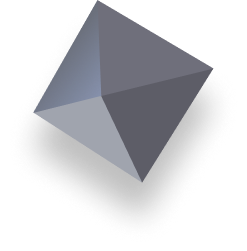The Differences Between VR, AR and XR
Virtual reality (VR) and augmented reality (AR) have been steadily gaining traction for the past several years. It’s been predicted that 52.1 million people in the US will use VR and 83.1 million will use AR at least once/month this year. By 2022, there will be 3.5 billion mobile AR users – that’s 44% of the world’s population! And the market for extended reality (XR) technology will surpass $18 billion by 2023.
Keep in mind that these predictions were made before the COVID-19 pandemic hit. Now, with people sticking closer (or fully) at home, traveling less for business and pleasure, and doing so much more online, I’m convinced that VR and AR will become even more ingrained in our lives moving forward.
That’s why it’s so important to understand what VR, AR, and XR mean and the roles they play. Here’s a quick primer:
Virtual Reality
VR tricks your senses into thinking you’re in a different environment than the one you physically occupy. It replaces your real world with a simulated one. You typically experience this new world through a head-mounted display or headset, where computer-generated imagery and sounds are all-encompassing. You can look around just like you would in real life, manipulate objects by using either controllers or your hands, and have real-time interactions.
VR is a completely immersive experience. The outside world is essentially blocked out. Use cases include simulated travel and adventure (like swimming with sharks), gaming, and training and education programs that would otherwise require physical manipulation or where incorrectly performing a task in real life could have harmful consequences.
Augmented Reality
AR is not fully immersive. It overlays digitally-created content on the real world. Reality is central to the AR experience. Enhanced with digital details, it enables new layers of perception. Instead of requiring a headset, you can use a smartphone, tablet, or other mobile devices and screens.
One of the most recognized AR applications is Pokémon Go, a game where people use their smartphone to find and catch digital characters placed in the real world, but AR use cases don’t stop there! There is a much more wider spectrum than that, including healthcare, medical training, education, aviation, and retail. Some have already experienced AR in their daily lives, maybe without realizing it; many people already have a digital projection on their car windshield displaying their speed and other vital details.
Extended Reality
XR is an umbrella term used to refer to VR, AR, and other simulated reality technologies. It can also include Mixed Reality (MR), which combines VR and AR. MR lets users see the real world (like AR) as well as virtual objects (like VR), and anchors those virtual objects to a point in the real world so that users can treat them as real. We are also seeing more and more use cases with the need for digital twins. A digital twin is a digital replica of a physical object. This digital replica can help us all better understand the physical objects faster and to scale without some of the associated cost of always having the physical object nearby. This can help everyone from students and educators, to engineers and scientists.
Enduvo specializes in making VR and AR content easy to quickly create, share, and consume. Contact us here if you’d like to learn more.




